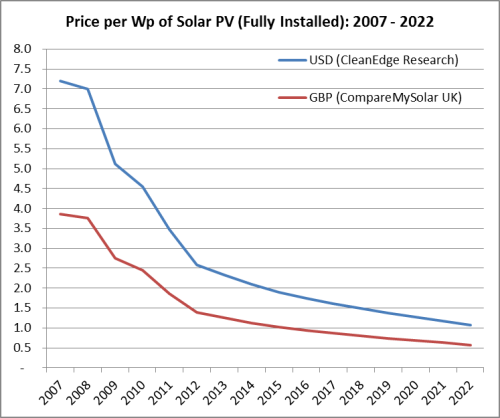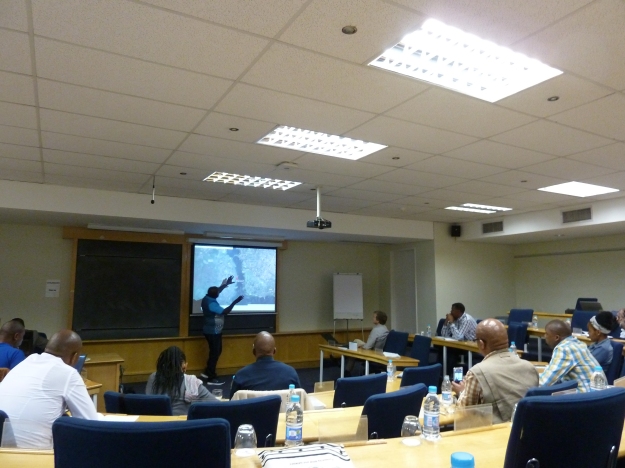This blog explores the role of Sub-Saharan African local governments can play in supporting the SDG energy-related goals and SE4All goals. It suggests that they play a key role in this area given that they are often at the forefront of service delivery and end-user interaction. Yet overall the capacity and resource needs of local governments on the sub-continent remain under-prioritised by national governments, international development aid agendas, and the global research community.
The goals of SDG7 and SE4All are closely aligned, but there are also other SDG goals that are relevant to sustainable urban energy. The SDG7 targets are:
- By 2030, ensure universal access to affordable, reliable and modern energy services
- By 2030, increase substantially the share of renewable energy in the global energy mix
- By 2030, double the global rate of improvement in energy efficiency
- By 2030, enhance international cooperation to facilitate access to clean energy research and technology
- By 2030, expand infrastructure and upgrade technology for supplying modern and sustainable energy services for all
In addition, relevant goals from SDG11 (sustainable cities) include access to safe, affordable, accessible and sustainable transport systems, enhancing the capacity for integrated and sustainable human settlement planning, and addressing the impact of poor air quality and municipal waste. All of these are closely linked to sustainable energy futures.
Many Sub-Saharan African countries have, or intend to develop, plans whereby the SDG7 and SE4All goals can be pursued. For example both Ghana and Uganda have such plans (Ghana SE4All Action Plan 2012, Uganda SE4All Action Agenda 2015), although it is notable that such key energy planning documents do not mention the transport sector – a major and fast growing energy consumer and emissions contributor. South Africa does not appear to have specific SE4All planning documents, although many initiatives exist in the country which are in pursuit of these objectives.
Numerous important sustainable energy initiatives are substantially linked to, or dependent on, national processes and mandates, or are best handled at a centralized national level (e.g. national power grid capacity upgrading, or changing regulatory frameworks around local generation). Nevertheless, much lies within the mandate or direct influence of local governments, and globally there is an increasing emphasis on local players taking a stronger role in sustainable energy issues, as has been reflected at the recent COP gatherings in Paris and Marakesh. In this regard, the work of the SAMSET project (Supporting sub-Saharan African Municipalities with Sustainable Energy Transitions) indicates that local governments on the sub-continent, and local research organisations, can play an important role in the following areas.
Local facilitation of household energy programmes which are driven by national or other players, such as cookstove, efficient appliance and electrification programmes: this includes collecting and providing information and data on needs and opportunities in local area; participating in implementation planning, community awareness raising and communication, and monitoring once implemented (all of these are best done at a local level); conducting research on impact and methodology improvements (Has it improved welfare? How could it have been better implemented? Costs vs benefits? Subsidy needs and justification? etc), and conducting research on impact on local small businesses (e.g. charcoal producers and retailers, appliance shops, cookstove manufacturers etc).
Promotion or facilitation of renewable energy programmes which need to be at least partially locally based (which may be driven locally or by national or other players), such as biogas, rooftop grid-connected solar PV, and solar water heating initiatives: this includes identification of local biogas opportunities (e.g. abattoir) and facilitating feasibility studies; engaging with power utility around local grid-connected solar PV pilot projects; engaging with local businesses (e.g. solar water heater, solar PV suppliers) regarding how to facilitate rollout and improve affordability; awareness raising and community engagement, and monitoring of implementation; research on impact and methodology improvements to maximize benefits; promotion and advocacy around fast-emerging options such as rooftop grid-connected solar PV; direct procurement of solar PV streetlights, and undertaking landfill gas feasibility studies and subsequent implementation pursuit.
Building energy efficiency promotion (local government often has direct mandates here): this includes developing local bylaws for commercial building energy efficiency; awareness raising around residential building energy efficiency (appropriate window use, shading etc), and organising training of building sector to improve ability for energy efficient construction.
Industrial energy efficiency promotion: including encouraging/incentivising audits (e.g. link with donor EE programmes), and facilitating training and awareness programmes locally.
Bringing sustainable energy concerns into spatial planning and transport planning: this includes introducing densification, corridor development, mixed use and other approaches into spatial plans; bringing tribal authorities (land owners) and municipal officials together in developing a shared vision around spatial futures, and researching and modeling the impact of different spatial and transport interventions on future energy, cost, social welfare, and economic activity – and engage with regional and national transport planning processes to introduce more optimal approaches.
Developing a more conducive enabling environment for implementation: this includes linking with support/donor programmes around supporting sustainable energy, and identifying how collaboration could work; researching and providing local data on energy status, problems, and opportunities; researching and communicating updates on implementation status as programmes are implemented, and evaluate their impact; capacity building of local government staff; programmatic partnerships between local government and local research institutions; developing networks amongst local governments for lessons exchange and mutual support, and developing links between local, regional and national players to facilitate integrated planning and coordinated approaches
Helping clarify the role of local government in sustainable energy, and identify effective methodologies to support them in fulfilling this potential: this includes researching the process of local government involvement and role in sustainable energy, and assess their challenges in this regard, researching approaches to supporting local government to engage effectively with sustainable energy promotion, and disseminate experience in this regard and potential for local government in promoting sustainable energy at workshops, conferences, meetings etc.
The role of local governments and local research organisations in moving to a more sustainable energy future as envisioned by the SDGs is clearly substantial. This has implications for development aid resource allocation and research funding channels. Importantly, it is not enough to just fund research – a dual approach of partnerships with researchers who align directly with the needs of local governments, as well as a strong focus on real capacity building of local governments is important (note that information dissemination is not capacity building). Programmes such as SAMSET are working in this area, but the needs are currently far greater than the enabling resources, by an order of magnitude at least.







